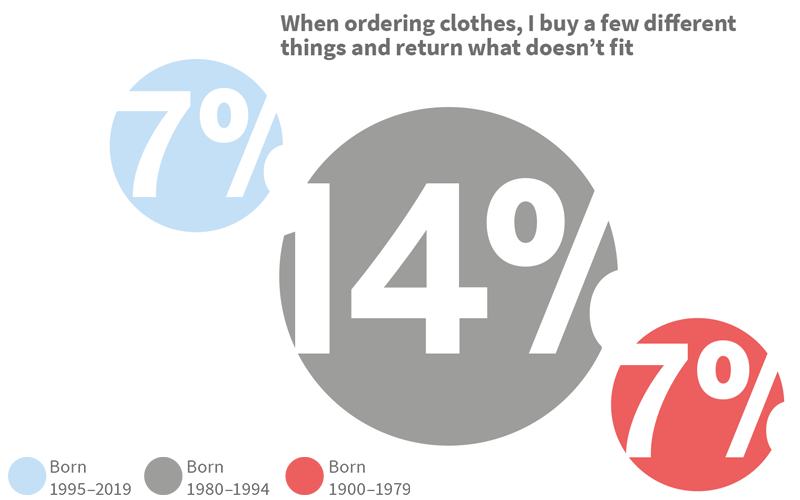
Generation Z is leading the change
The clothing industry is on the move! From focusing on environmental impact by cars, plastic in oceans and flying everyone now seem to be talking about the impact of apparels and clothes.
Part of me says, “It’s about time!” but the other part says, “Slow your roll!”
Like all major shifts in opinions, it starts with awareness and with people trying to understand what you can do as an individual and society. Then it changes to action over time. The mainstream adoption takes time, and this category is just getting started. Let’s take a closer look at what it is about.
In this year’s survey for Schibsted Future Report we have investigated the interest among Swedes in three different generations in changing wardrobe habits. The result shows that the concern of the environmental impact of apparels and the clothing industry is developing. From being about an industry pumping out collections to fashion-interested consumers, we now see a shift where the consumer has an increased interest in buying secondhand, in mending and re-designing clothes. There is also a clear difference between the millennials and generation Z, where the generation Z to greater extent prefer secondhand clothes over new clothes.
Adopting new behavior fast
20 percent of generation Z say that they prefer secondhand clothes, compared to 6 percent among the millennials.
Not surprisingly, the younger generation is leading this change, with generation Z adopting new behavior much faster.
We know that the concern about the environment is strong among the consumers, but the shift towards changing shopping behavior is still more about convenience. Not least for younger generations it’s important to be able to shop online, try the items on and send the unwanted clothes back.
A habit that has a really bad impact on the environment. Now online vendors are starting to ban the serial return habit, locking these shoppers out.
Almost three quarters of the millennials admit that they have bought clothes online that they have sent back. Only one quarter says that they haven’t done so, which is less than any other group of people. If we compare to generation Z that group seems to be more aware, but the reason for not having adopted the same online shopping behavior is most likely that they are simply not old enough and don’t have the money to spend.
A part from doing good for the environment, the fact that buying secondhand is cheaper and that it is fun to bargain, is a driving force impacting new behaviors.
Even traditional retailers are starting to embrace secondhand and making it more accessible for consumers. The secondhand customer is no longer somebody else’s customer, they are everybody’s customer. No matter if it is luxury or mass market, if people can find a high-quality product for much less, they’ll choose used. As the line between new and used apparel blurs for consumers, a powerful transformation in clothing industry will unfold.

Karin Nelsson
CEO, Demoskop
Years in Schibsted
4.5
My dream job as a child
Musician


